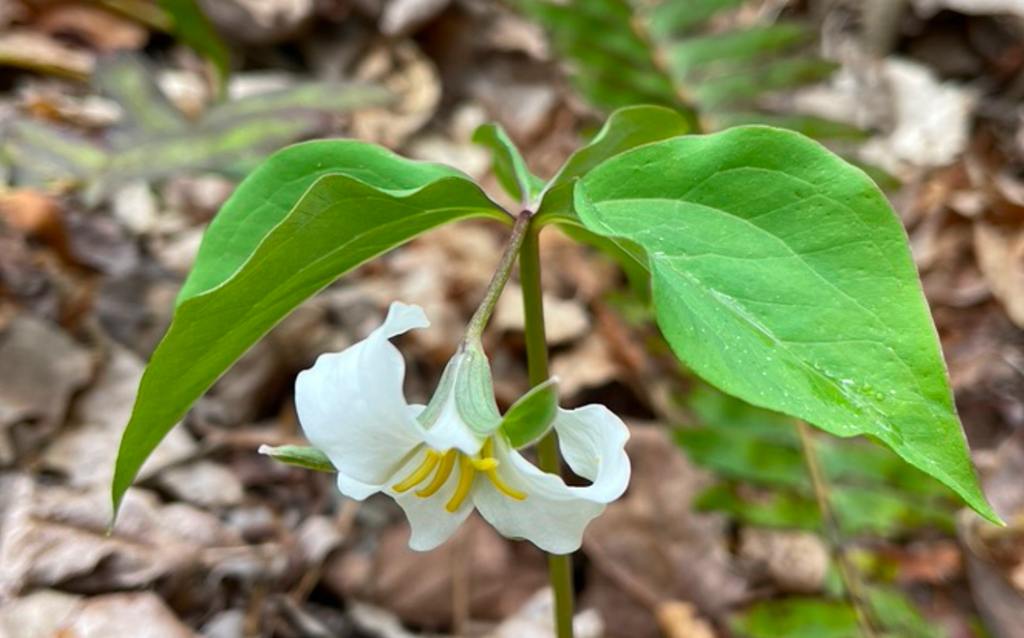Trilliums, in all their three part harmonies, are some of our most beautiful wildflowers. Worldwide there are 43 different species, 38 of which are native to the United States, primarily in the Southeast. Georgia alone boasts 20 native trillium species, two of which are on the federal endangered species list.

Even though a “rose is a rose is a rose,” the same is not true of trilliums. Though they all have three petals, three sepals and three leaf-like bracts, there is a wealth of variation in color and flower form. They are broadly grouped into two different types: pedicidellate, meaning the flower is attached to a short stem called a pedicel (such as the nodding white trillium above) or sessile, meaning the flower seems to grow directly from the bracts (such as the relict trillium below).

Trillium reliquum, a federally endangered species, grows in only a few places in Georgia, South Carolina and Alabama. It is part of a mature hardwood forest ecosystem. Unfortunately, much of its native range has now been taken over by timber companies for growing pines for pulpwood.

Trillium persistens is a gorgeous white blooming plant native to a tiny slice of rugged land that spans the Georgia, South Carolina border in the Tallulah -Tugaloo River drainage. This species has probably never been abundant so losing even a small percentage of the population has devastating effects. The primary threat to the species is an altered habitat due to the continued demise of the hemlock ecosystem.
Our very common and charming little toad shade trillium, T. cuneatum, grows abundantly throughout the south and is a great trillium to include in a garden. It has a musky scent that attracts pollinators such as beetles. As charming as it is, the toad trillium wouldn’t win any beauty contests when lined up with such stunners as the snow or painted trilliums.
Seeing a wild hillside covered with trilliums in bloom is thrilling. It will stop you in your tracks and offer the gift of awe and wonder. We should be full of gratitude for such a gift of nature and should work unceasingly to protect the threatened and vulnerable of these species.

To learn more about Georgia’s endangered trilliums and other species, go to my exhibit, Imperiled Beauty at the gallery of the Atlanta Botanical Gardens. The exhibit will be up until December 3, 2023.
